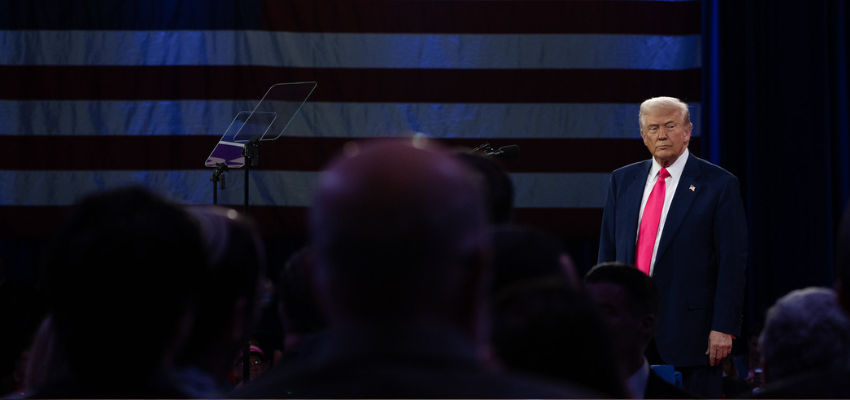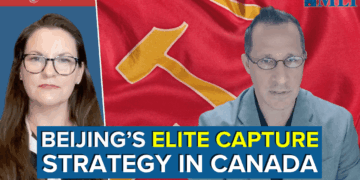This article originally appeared in Canadian Affairs.
By Alexander Dalziel and Alan Bersin, February 27, 2025
When the U.S. Congress passed the Smoot-Hawley Tariff Act in 1930 to raise tariffs on imported goods, humourist Will Rogers quipped: “This country has come to feel the same when Congress is in session as we do when the baby gets hold of a hammer. It’s just a question of how much damage he can do with it before you take it away from him.”
With President Donald Trump’s return to the White House, many Canadians are watching warily as he threatens tariffs, again. While the instinct may be to react defensively and with patchwork responses, Canada should proactively shape the bilateral agenda.
Canada must come to the table with trade and security proposals that serve its — and the United States’ — interests.
North American defence
One place where Canada can lead is in strengthening continental defence in the Arctic.
Russia’s expanding Arctic capabilities and China’s growing interest in the region demand a coordinated North American response. Neither Canada nor the U.S. has fully committed to meeting this challenge.
Canada has every reason to invest to protect its own national interests on the continent.
A practical way forward would be at the North American Aerospace Defense Command (NORAD), a joint Canadian and U.S. organization that protects North America from threats in the air, space and sea.
NORAD was originally designed to counter Soviet missiles over the North Pole. Canada could modernize the organization in two ways.
First, it could invest in much-needed icebreakers, military infrastructure and surveillance technology to improve NORAD’s ability to protect the Arctic’s airspace and seas.
Second, Canada could propose creative ways to involve Greenland and Denmark more closely in NORAD, NATO and North American trade.
Trump has spoken about wanting to purchase Greenland because of its strategic location along crucial air and sea routes and its natural resource wealth.
As Greenland’s closest neighbour, Canada should seize the initiative to position itself as the innovative leader in Arctic security and economic development. It could propose new trilateral initiatives on aerospace and maritime security and economic security.
Cargo pre-clearance
Looking directly to U.S.-Canada trade, another opportunity lies in pre-clearance programs to streamline trade and travel.
In 2015, Canada and the U.S. signed an expanded pre-clearance treaty — the Agreement on Land, Rail, Marine and Air Transport Preclearance — which allows travellers to clear U.S. border controls at Canadian airports and seaports. It also permits cargo pre-clearance, a potential game changer that neither of the two countries has yet implemented.
The benefits of cargo pre-clearance are clear: reducing wait times, cutting businesses’ costs and improving supply chain efficiency. However, past efforts to establish pilot programs stalled because of complications over jurisdiction and inspection, as well as logistical challenges and lack of political support.
Canada can push to overcome these bureaucratic obstacles.
Doing so would also address a core concern of Trump’s administration: Chinese trans-shipment. The U.S. has accused China of backdooring goods through Canada, and Trump has used this as a justification for trade restrictions. A robust pre-clearance system that requires joint screening and targeting by Canadian and U.S. border authorities would resolve the immediate issue — and strengthen North American trade and security.
Tariffs. What then?
Should Trump drop the hammer and impose tariffs, Canada must adopt an approach of creative negotiation — and not just retaliation. Canada should propose trade deals, built on its national strengths, that would make North America stronger.
Canada has several points of leverage.
Energy security is a strong starting point. Canada — the U.S.’s largest external supplier of energy — can ensure a stable, affordable supply of oil, gas, electricity and uranium to the U.S., thereby protecting its own industries.
Similarly, Canada could make itself indispensable to Washington’s supply chain strategy by advancing proposals to break China’s dominance of critical minerals mining and processing. This would guarantee the availability of critical minerals for defence and technology manufacturing in North America.
Simply seeking to avoid tariffs or sidestep pressure on defence spending is a recipe for a protracted dispute.
Instead, proactively coming to the table with concrete proposals that strengthen economic and security ties with its key partner will turn longstanding opportunities into long-term advantages for both.
Let’s put down the hammer and resume shaking hands.
Alexander Dalziel is a senior fellow at the Macdonald-Laurier institute in Ottawa and a former national security executive and analyst in the Government of Canada.
Alan Bersin was an assistant secretary at the US Department of Homeland Security between 2012–17 and the head of US Customs and Border Protection from 2010–11.








